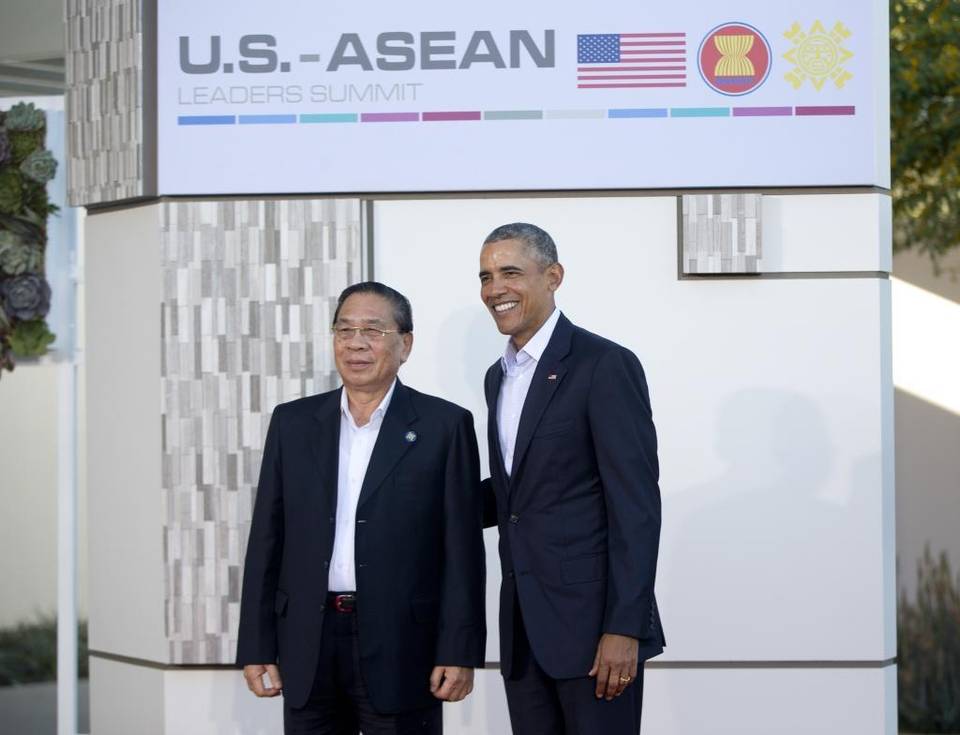President Barack Obama’s historic visit to Laos next month marks a new chapter in a complicated relationship previously marked by covert wars, political enmities and refugee flows that have changed the complexion of California’s Central Valley.
Formally announced Thursday by the White House, Obama’s early September visit will be the first by a U.S. president to the country formally known as the Lao People’s Democratic Republic.
“The president will discuss ways to strengthen our economic cooperation with the countries of Southeast Asia, which collectively represent America’s fourth-largest trading partner, and further enhance our collaboration on regional and global challenges,” White House Press Secretary Josh Earnest said in a statement.
Obama’s appearances at the U.S.-ASEAN Summit and the related East Asia Summit, which are scheduled for Sept. 6-8 in the Laotian capital of Vientiane, will follow a stop in China and conclude his 11th visit to Asia since 2009.
It will shed light, as well, on a landlocked country that’s at times played an outsized role in U.S. foreign policy.
“We’ve seen a lot of very positive changes,” Doug Hartwick, a former U.S. ambassador to Laos, said in an interview Thursday, adding that “this basically normalizes a relationship that increasingly has been on a stronger footing.”
California, in particular, has been tied to Laos since the end of the Vietnam War, when refugees found new homes in cities like Fresno and Merced. Nationwide, some 209,000 U.S. residents were identified as “Laotian” in the 2010 census, with the largest number living in California.
The refugee population includes former residents of the Laotian lowlands as well as the Hmong, whose Vietnam War-era assistance for the CIA and U.S. Special Forces in the country’s mountainous regions made them targets for persecution.
The concentration of first-generation Laotian refugees in certain regions, in turn, long drove some hard-line U.S. political posturing toward the nation of 6.9 million residents. Then-Rep. George Radanovich of Mariposa, for instance, once joined five other California lawmakers in pushing a resolution “condemning the communist regime in Laos for its many human rights abuses.”
The U.S. State Department in its 2015 annual human rights report on Laos stated that “the most significant human rights problem continued to be that the government denied citizens the ability to choose their government.”
Citing human rights concerns, California lawmakers allied with the Fresno-based Lao Veterans of America helped fend off normal U.S. trade relations with Laos until the George W. Bush administration finally secured it in 2004.
At the time, overall trade between the U.S. and Laos totaled about $8 million annually. Last year, total trade in goods between the two countries reached $69.8 million, with Laos exporting more to the United States than it imports.
Over the same period, the vehemently anti-communist refugee leaders that complicated Hartwick’s job when he was U.S. ambassador between 2001 and 2004 have been getting supplanted by a more flexible generation, or at least one with different priorities.
“I couldn’t make any headway with the old guard,” Hartwick said, “but their children were much more open.”
Bounhong Khommarath, formerly a leader of the San Diego-based California Lao Association, concurred that attitudes are changing.
“After they put history behind them, and look forward, the new Lao-American generation will feel better,” Khommarath, now an adviser for the Lao Parent-Student-Teacher Association, said in an interview Thursday, adding that Obama’s visit “will be significant for the relations between Laos and the United States.”
This Congress, with trade between the two countries a long-since settled issue, Rep. Jim Costa, D-Fresno, has returned with legislation to authorize the burial of Hmong veterans of the Vietnam War in U.S. national cemeteries.
Still other shards remain in the unexploded U.S. ordnance still littering Laos, with Hartwick suggesting that Obama could announce additional assistance for the Laotian clean-up effort. Currently, the United States is providing $19.5 million a year for the program, which has cut the number of fatalities.
“We’re now down to about 50 a year,” Secretary of State John Kerry told reporters in Laos earlier this year, according to the Washington Post, adding that “50 a year is still too many.”
Source: The Kansas City Star



